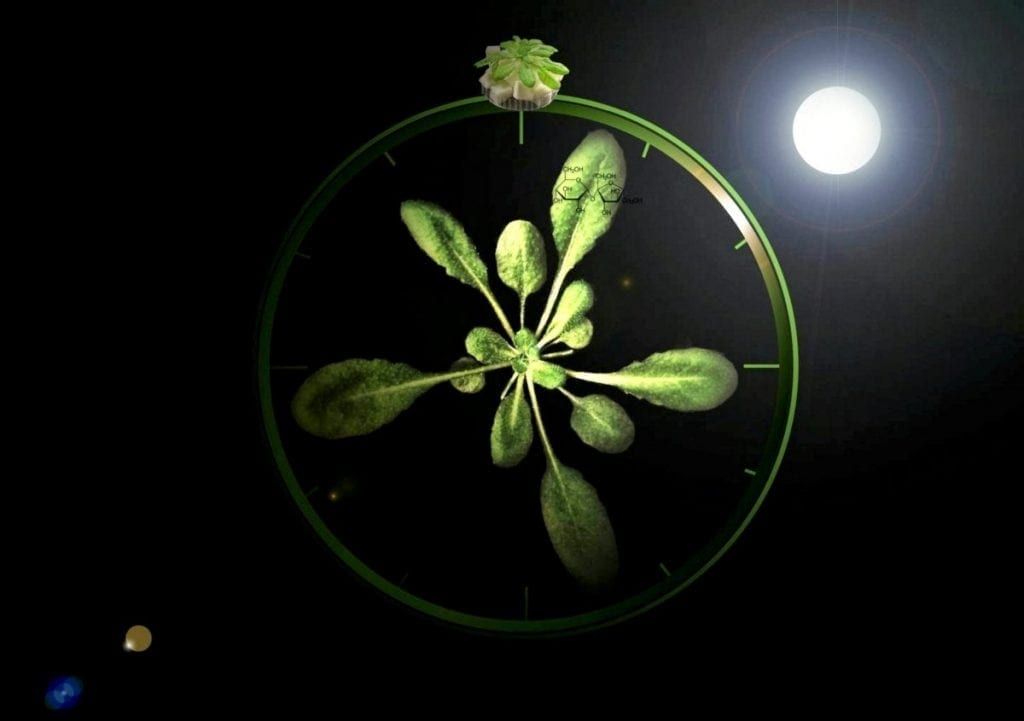Plants can tell the time of day… just like animals, according to new research.
The adjust their ‘body clock’ to the cycle of day and night using sugars, say scientists.
Plants, animals, fungi and even bacteria can estimate the position of the sun through their circadian rhythms.
This 24 hour biological clock gives plants an innate ability to measure time – even when there is no light.
They don’t simply respond to sunrise, for example – they know it is coming and adjust accordingly.
It provides an important competitive advantage and is vital in biological processes such as flowering, fragrance emission and leaf movement.
Now an international team has discovered plants alter their daily circadian rhythm to the cycle of day and night by measuring the amount of sugars in their cells.

How these clocks operate is a topic of importance for both agriculture and medicine. For example, changes in circadian rhythms have contributed to domestication of crops.
In the study published in Current Biology researchers from England, Brazil and Australia identified a process that adjusts the timing of the plant body clock so it stays in tune with the environment.
They found that sugars made from photosynthesis are sensed, and this leads to the plant falling into rhythm with changes in energy provision throughout the day.
Dr Antony Dodd, of the University of Bristol’s School of Biological Sciences, said: “Our findings show the first mechanism in plants that shifts the circadian rhythm backwards or forwards to synchronise it with the environment.
“The plant continuously measures the amount of sugar in the cells and uses this information to make the required adjustments.”
Plants need circadian their rhythms to be correctly synchronised with the timing of day and night, so their activities are matched to the time of day.
For example, circadian rhythms control the time when plants grow, when their flowers open and release scent, and allow plants to carefully use energy reserves so they do not starve in the night.
Circadian rhythms also help plants to detect changes in the seasons, which is crucial to ensure our crops mature in the correct season.
Added Dr Dodd: “This means the discovery of a mechanism that synchronises the plant body clock with the time in the environment has identified a new process that could be exploited in future to improve crop performance.”

